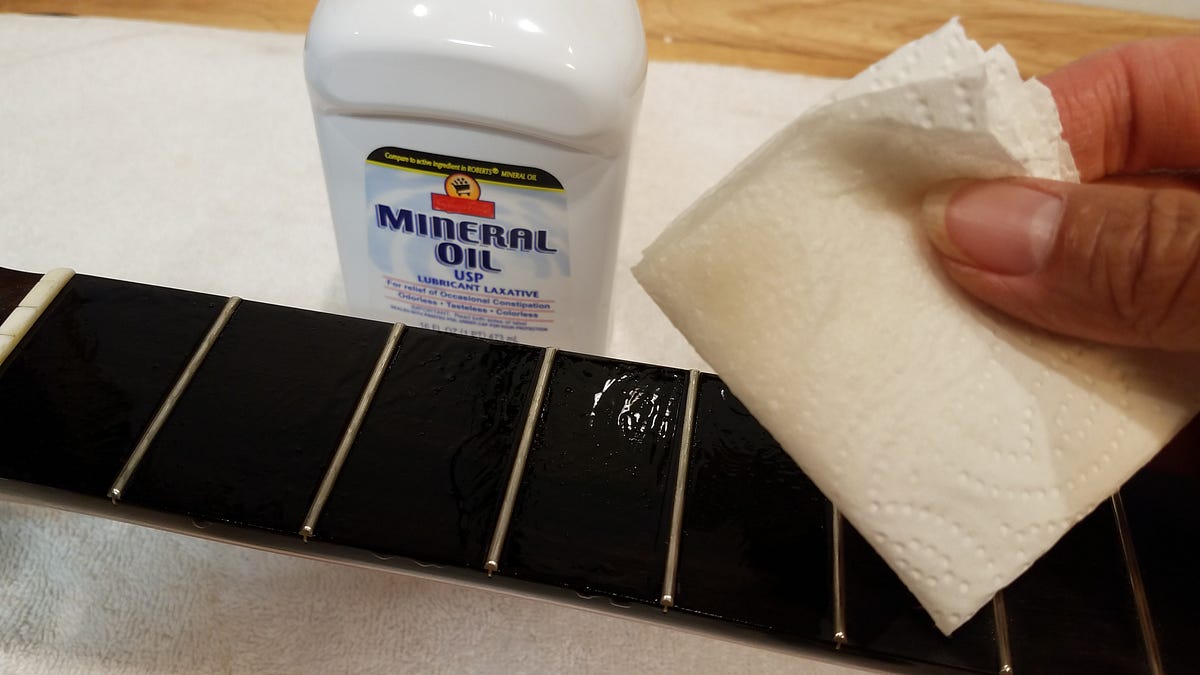chazmo
Super Moderator
Next time, clean the fretboard with 0000 steel wool and then oil it, richt54.
I don't agree with your statement that it has been played alot simply from the absence of associated fret wear. The person or people that owned played it and put it away without wiping it. It's a 13 year old guitar and probably has never had the fretboard oiled once.
Is there a compound or substance applied when the steel wool is used or just the steel wool dry? I already bought the bore oil. And that is best applied with a cloth or paper towel?Next time, clean the fretboard with 0000 steel wool and then oil it, richt54.
Good advice here. I have really dry hands, so it's not as much of an issue, but I have bought guitars that were downright gross from all that nasty stuff in the past. I think @Walter Broes has a good story about that. And all the removal advice you're getting is good too.I never said there was fret wire wear. or wear on the fingerboard wood. I was pointing to the gunk built up on the wood of the 4th fret, and you can see the scalloped pattern on the wood surface. The wood surface, oiled or not, doesn't develop that on its own; it is skin oils, dead skin cells, and perhaps some sort of fretboard conditioner (I will not pretend to know what conditioner it is), suffice it to say that the conditioner is binding all of the skin oils and dead skin cells to the fingerboard wood. As part of that, the other part is that those skin oils and dead skin cells got there some way, and the most logical way is because the guitar was played, and judging from the amount of gunk, was played a lot, by a human being. Skin oils and dead skin cells do not magically appear out of thin air, it takes a human being to get them on there, and playing the guitar is normally the way that the gunk gets on there. This is why my emphasis on non-silicone (besides the difficulty that it presents to any repairs at some point in the future) and non-petroleum distillates in guitar care products. Neither one of them ever completely dry, and from body heat alone while playing, can soften, and hold skin oils and dead skin cells, which results in what you are seeing on the 4th fret of your fingerboard, in the picture you yourself posted.
As to whether you agree or not, doesn't change what is in the picture, and doesn't change the mechanism by which that gunk appears on the fingerboard. It happens on all guitars that have been conditioned and have been played, your guitar is no exception.
Dry. Rub gently with the grain, and I also gently rub the frets (that's against the wood grain, but I don't push down to the wood).
I apply the bore oil with my finger and rub it in that way, and then wipe off with either cloth or paper towel, rich.
Post oiling fretboard after cleaning and applying mineral oil.I received this guitar on Thursday via Fed Ex. I bought it off of Reverb. It was made September 8th, 2009 in New Hartford. It was the first guitar finished. The seller included some Elixir custom light strings because the strings on it were not good. I cleaned it up and restrung it. It seems to me that the guitars that I get take a day to wake up after travel. I will try to do a good comparison to my recently acquired 2005 D-55 Tacoma built Guild. The seller said he bought it and never played it so he waited to pass it on to someone who would. Logged a few hours so far. With the comparison I will try to make a video that demos the look and the sound. I wanted a D-55 now I have 2.
I used the rough side of the sponge with mineral oil on it for cleaning and applied mineral oil on the fret board with a paper towel and let it sit for 5 minutes and wiped the excess with a microfiber towel that can be bought in packages at Costco.Just curious, did you use wool on it? You really did get the gunk off!

 medium.com
medium.com

How To Clean & Oil Your Fingerboard — Guitar Care 101
Luthier extraordinaire Garrett Lee joins us again for his third installment of Guitar Care 101. This week he walks us through the simple…medium.com